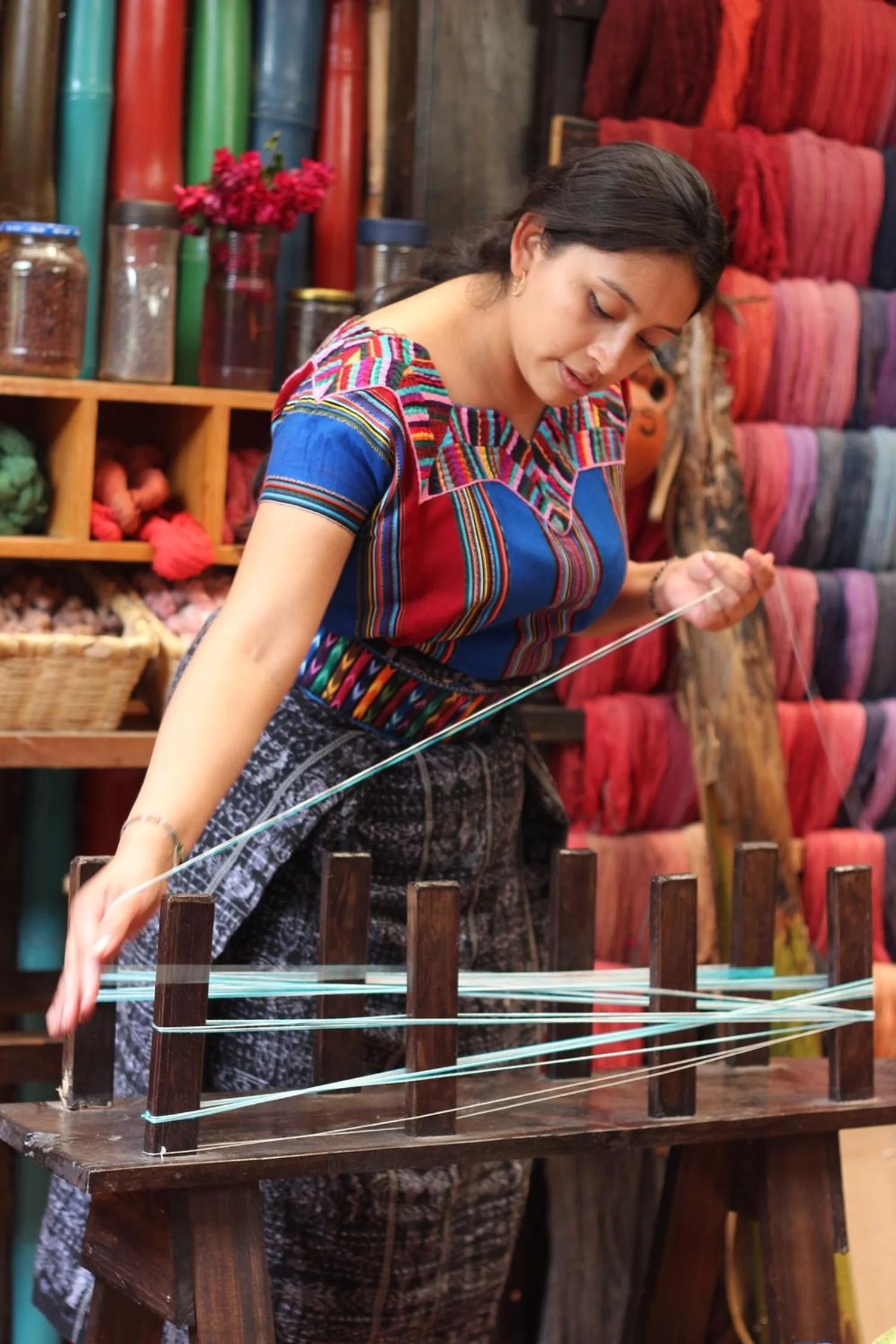San Juan, Guatemala
The town of San Juan la Laguna is nestled on the shores of Lake Atitlan in the heart of the Mayan region and present day Guatemala. Guatemala has a rich textile culture that is still vibrant today. Towns abound with brilliantly coloured, hand-woven fabrics, and many Guatemalan women still wear their traditional dress.
Daphne is a Mayan woman and key member of Casa Flor Ixaco, a women’s cooperative in San Juan specialized in natural dyeing and backstop loom weaving.
Their process begins with locally and organically grown cotton that is dyed using seeds, leaves, flowers, tree bark, and fixed to the fiber using ground bark from the banana tree. It was astounding so see such brilliant colors achieved with so few and so pure of ingredients.
Casa Flor Ixaco provides the women with a source of income and enables them to continue creating in the traditional manor of doing each part of the process by hand. When asked why they choose not to used mechanized looms - as these would be much faster, Daphne responded simply,
“This is who we are. This is our culture.”
Preserving this tradition goes beyond the physical beauty and exquisite detail of the textiles. This process of creation carries stories and significance which are impossible to grasp or even to imagine. Women have been weaving in this way for hundreds of years, weaving their sorrow and their joy, their love and their heartbreak into pieces of clothing and blankets that have warmed friend and foe alike.
Whether woven by a woman like Daphne working within an empowered cooperative of women in Guatemala, or a young Bangladeshi girl working in a people-packed factory in the slums of a nearby city, each textile holds the imprints of those who brought it into existence. Here in the ‘developed’ world, where much of this process is obscured from our view, the clothes still carry these stories.
As holders and wearers of these pieces, we are in a special position to respect all that has gone into their creation and to continue their story forward. To honor those that have held the cloth before us and to preserve the materials that surround us, doing all in our power to lengthen their lifespan and conserve their value.

